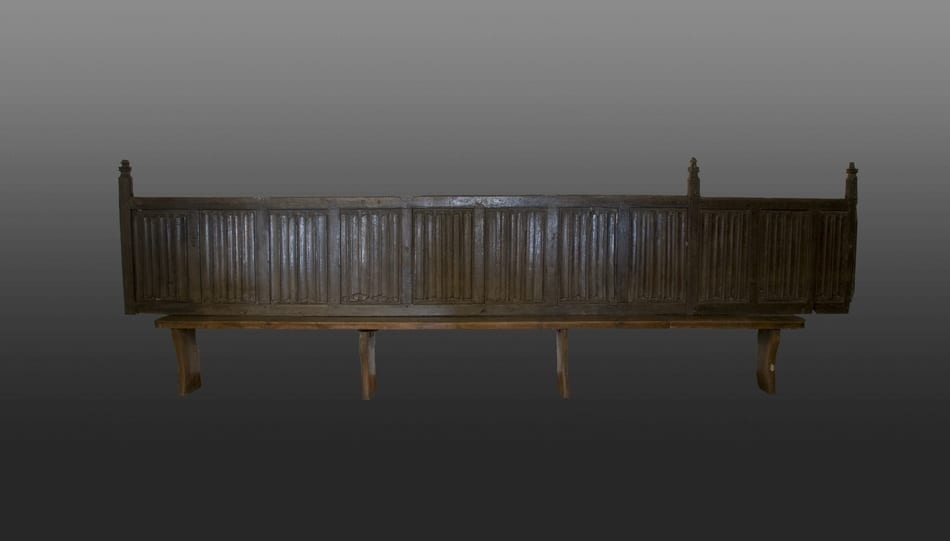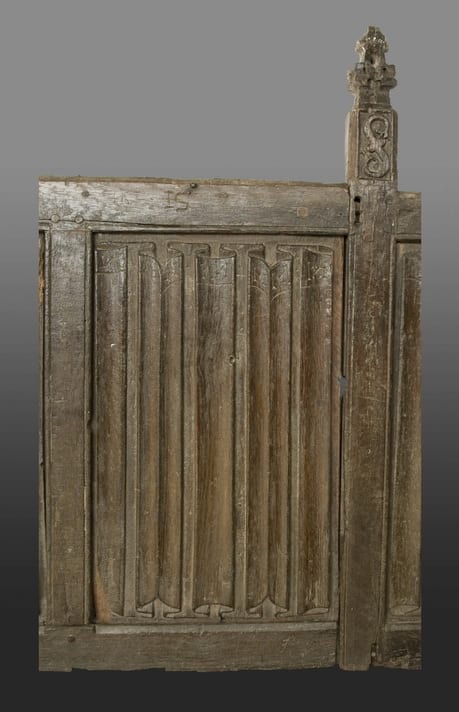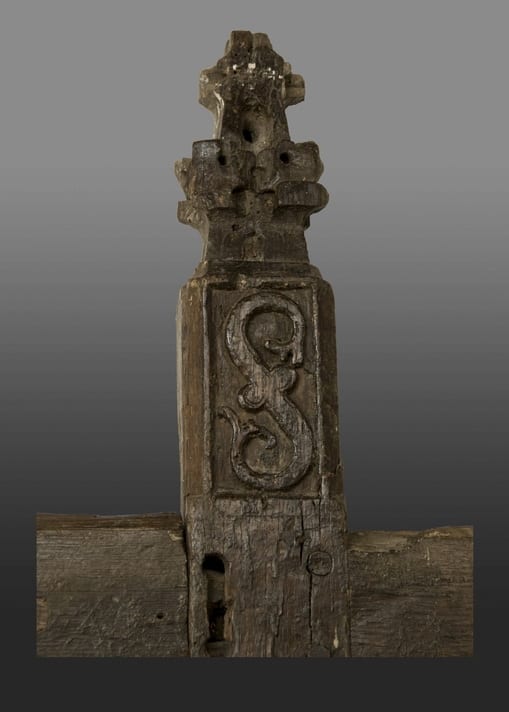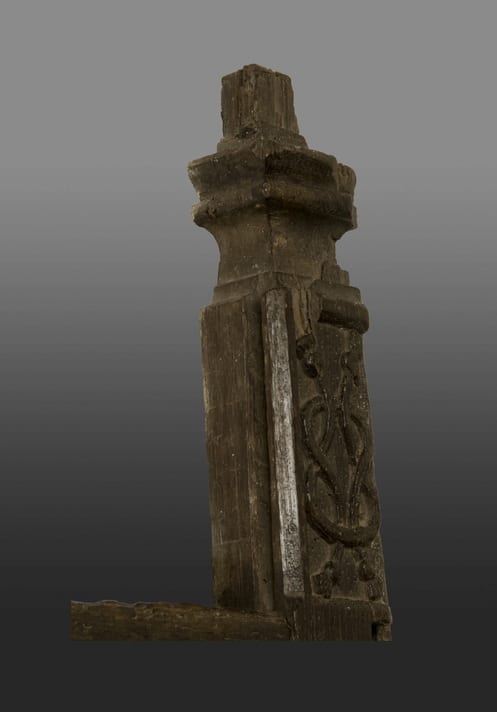Henry VIII linenfold wall bench
1500-1520
North Devon, England
W 15" × H 54" × D 11"
Stock # Marh0407
SOLD
Tudor fixed wall bench with linenfold panels and castellated finials. Fixed wall benches
are a distinctive form of semi-fixed joined furniture which proliferated in the great household of the West Country elite during the first half of the sixteenth-century. These objects consist of runs of vertically oriented framed panels (typically a single row, although examples with double rows of panels are known) secured to a wall at approximately chest-height. Settle backs, as they have been identified by contemporary antiquarians and historians, were often heavily ornamented with carved panels, worked mouldings, elaborate finals, and decorated heads (thin, horizontal boards captured between the finals above the panels. Most feature the type of progressive, motifs (linenfold and grotesques) associated with the Continental Renaissance of the early sixteenth century. Below the settle-back, a simple and usually un-adorned, slab-like bench with shaped board supports serves as seating, allowing the fixed paneling to function as a back rest. While not exclusive to the West Country, the majority of documented fixed wall benches have histories of recovery or remain in situ within large houses in communities throughout North Devon. This example which features castellated finials and narrow linenfold panels worked with deep, undulating tubular folds which terminate in a defined selvedge elaborated with chisel cuts relates to a group of fixed wall benches constructed by a shop working in and around Barnstaple, Devon. A fixed wall bench with closely related linenfold panels and castellated finals is at Cogworthy Farm in Yarnscombe, near Barnstaple while another, in the collection of the Victoria and Albert Museum, was recovered from Orchards Farm, Monkleigh, Devon. The fixed wall bench discussed here differs in the inclusion of relief carving on the flat faces of the surviving finials. These motifs (a knotted cord and an with a cross serif) likely represent the personal and familial badges of the original owner.
As elements of architecture, Tudor fixed wall benches were subject to constant modification, reduction, and relocation. Virtually, all have been removed from their original settings and extensively reworked. Examples in any condition are exceedeingly rarified. Few if any retain their full length as does this fixed wall bench which stretches to fifteen feet.
Repairs to joints; headers and some finals lost.
Undisturbed surface condition with ancient, gray patination.
Ex. Roger Warner collection
Many of the panels of this fixed wall bench exhibit generations of graffiti. Most if not all of these added initials and small motifs date to the late medieval and early modern period as indicated by their form and the extensive patination developed above and around them.
The Cogworthy Farm fixed wall bench is illustrated in part in Cescinsky and Gribble, Early Furniture & Woodwork, vol.1, p. 237, fig. 262, p. 262
The V&A (Orchards Farm) fixed wall bench is illustrated in Charles Tracy, English Medieval Furniture and Woodwork, p. 198, cat. 328





